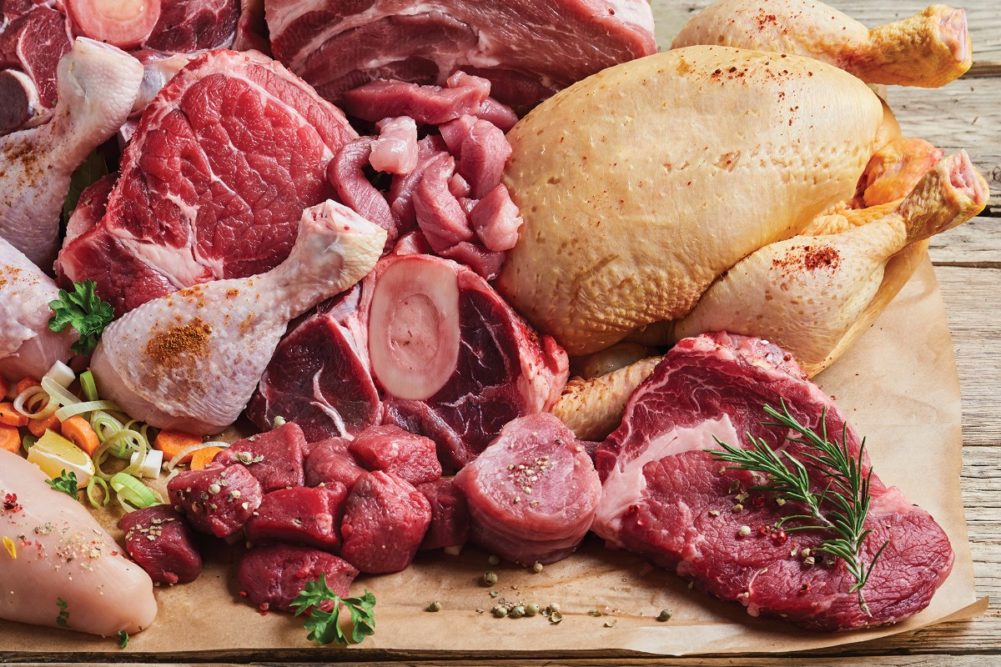The 2020 Dietary Guidelines Advisory Committee (DGAC) presented its draft report on June 17. The final report will serve as direction for the next iteration of the Dietary Guidelines for Americans (DGA). Numerous groups express profound concerns about the process and scope of research explored by the DGAC to prepare the report, mostly because they focused only on healthy people. The draft does not bode very well for most meat and poultry products.
The committee concluded that dietary patterns rich in fruits, vegetables, legumes, nuts, whole grains, low- or non-fat dairy and seafood, and lower in red and processed meats, refined grains, and foods and beverages high in added sugars are associated with a lower risk of obesity, cardiovascular disease, Type 2 diabetes, hip fracture, breast cancer, colorectal cancer and all-cause mortality.
When making the recommendation, the DGAC continued to put a cap on saturated fat at 10% of calories, even though extensive research was presented by health and nutrition authorities that does not support such a limit. The DGAC conclusion contradicts nearly 20 reviews of data by independent groups of scientists around the world, including a just-published review in the Journal of the American College of Cardiology, whose authors include a member of the 2015 DGAC as well as the chair of the 2005 DGAC. The paper states, “The recommendation to limit dietary saturated fatty acid intake has persisted despite mounting evidence to the contrary…The totality of available evidence does not support further limiting the intake of such foods [containing these fats].” This includes meat and poultry.
“The American people deserve trustworthy nutrition policy based on a comprehensive review of the most rigorous science. Without reforms, this process is on track to exclude large bodies of scientific literature, including virtually all studies on weight loss,” US Representative Dusty Johnson (R-SD), ranking member of the House Agriculture subcommittee on Nutrition, Oversight and Department Operations, wrote in a letter a few days prior to the draft’s publication. “What good are Guidelines that don’t address obesity?”
The Academy of Nutrition and Dietetics, which represents some 107,000 dieticians, made two public comments. The first included strong statements about the need to delay the expert report in order to complete the scientific reviews properly. The second detailed the problems with the scientific process, noting a lack of clear methodology and the need to expand the scope of the DGA to include not only healthy Americans but also those with diet-related diseases. For instance, the 2020 DGAC has chosen to exclude virtually all the science on weight loss at a time when a large majority of Americans are suffering from overweight or obesity, conditions that are closely tied to the development of other diet-related diseases such as hypertension, Type 2 diabetes and certain cancers.
“A Dietary Guidelines that does not address the two-thirds of Americans who are overweight or have obesity is, in our view, a nutrition policy that lacks relevance to much of the general public and reflects an insufficient review of the science,” stated the Academy.
A letter by the Low-Carb Action Network, a group advocating for low-carb diets, objected to the DGAC’s exclusion of virtually all scientific studies on low-carb diets, a problem also emphasized by Johnson.
As Johnson wrote, “If Americans were free to ignore the Guidelines in setting their dietary goals, we might make progress in reducing rates of diet-related diseases. However, the Guidelines are required guidance for federal feeding programs, including the School Lunch Program, military rations, feeding programs for the elderly and the Supplemental Nutrition Assistance Program (SNAP), and they serve as the basis for recommendations by physicians and dietitians, as well as for the Nutrition Facts Panel on food packaging. Thus, their influence is pervasive in determining the foods consumed by Americans.”


